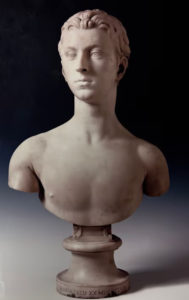In 1930, the council of a small town in the Scottish Highlands bought a marble bust for £5. Now, someone’s offering £2.5 million for it.
The town of Invergordon, located over a hundred miles north of Edinburgh in the Scottish Highlands, is home to less than four thousand people. It first became aware that it owned a valuable French sculpture in 1998 when council members stumbled upon it in a storage shed. One council member described it as “a wee white marble sculpture thing holding open the door.” The sculpture is thought to be by the eighteenth-century French artist Edmé Bouchardon, one of the most prolific sculptors during the reign of King Louis XV. Bouchardon was responsible for many of the sculptures and fountains at the Palace of Versailles. His last work was a large equestrian statue of Louis XV that stood in the Place de la Concorde in Paris until its destruction during the French Revolution. Today, Bouchardon is recognized as a transitional figure in French sculpture, helping move artists out of the Baroque and Rococo and into the neoclassical. The Invergordon bust is an example of Bouchardon’s early work, made during the ten years he lived, studied, and worked in Rome thanks to a scholarship from France’s Royal Academy. The sculpture’s subject is likely Sir John Gordon, a Scottish aristocrat whose family gave the town its name. Gordon represented a constituency that included Invergordon in Parliament between 1742 and 1747, then again from 1754 to 1761. Between his nonconsecutive parliamentary terms, he served as Secretary for Scotland for the Prince of Wales. The Bouchardon sculpture shows Gordon as a young man during his travels through Continental Europe, as he would’ve been twenty years old when Bouchardon created the bust in 1728.
The town originally bought the Bouchardon bust in 1930 at an estate sale for £5; today, that would be roughly £270 (or $330). Since its rediscovery in 1998, the sculpture has been kept mainly at the Inverness Museum, just a half an hour away by car. It was briefly loaned to the Louvre and the Getty Museum for exhibitions. Working with Sotheby’s, the council agreed on October 30 to consult the local residents on whether or not to sell. According to Sotheby’s, one potential buyer has already offered £2.5 million. This buyer also offered to pay to create a museum-quality replica for Invergordon to keep. Should the sculpture sell for anywhere near that amount, that would make it one of the most valuable Bouchardon works ever sold. The most expensive thus far is a 1736 bust sold to the Louvre in 2012 for €3 million (or about €4 million / $4.3 million in 2023) at the Paris auction house Aguttes. The Invergordon council has already said that any proceeds from the bust’s sale would go towards local community projects. There have been some, however, who have criticized the local council’s decision to sell when they could have loaned the bust to any of the respected museums in Scotland, including the Inverness Museum. But while selling the work may be a loss for culture, a small town like Invergordon may greatly improve its services and the quality of life for its residents with several million in the bank.

